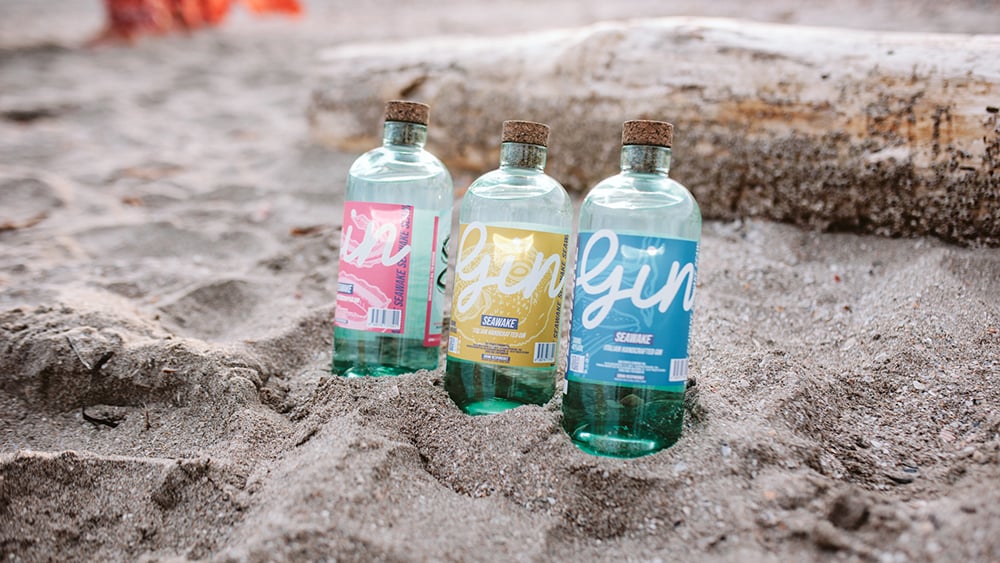How prepared are brands for packaging waste regulation?
A recent UPM Raflatac and Pentawards survey highlights the challenges packaging designers face when navigating environmental concerns and tightening regulations.

Packaging sustainability will become a significant focus in the coming years as regulations become stricter. This is particularly evident as the EU Packaging and Packaging Waste Regulations (PPWR) impact all converters that provide labels and packaging in the EU.
PPWR establishes new obligations for packaging suppliers, manufacturers, producers, retailers and waste management companies to handle packaging made from any material distributed in the EU market, regardless of location.
Designing sustainable and functional packaging is a complex process influenced by several factors, including material selection, functionality, cost and environmental impact. With these existing challenges, the added requirements of the EU PPWR raise the question: Are brand owners and packaging designers prepared
to adapt and ensure compliance while maintaining packaging innovation and functionality?
UPM Raflatac, in collaboration with Pentawards, revealed insights from a survey of top packaging designers, highlighting challenges in sustainable packaging design and strategies to overcome them.
The survey results show that while most (47 percent) of the designer respondents feel extremely comfortable handling briefs that include sustainability requirements, 43 percent of them would prefer more direction or information to feel fully comfortable when dealing with these briefs. This highlights a need for further education on incorporating sustainability into packaging design, with 35 percent of respondents suggesting material guides would be the most beneficial.
Further findings reveal that 57 percent of the designer respondents believe they always, or often can, impact a product’s material choice. However, 20 percent say they seldom do, and 17 percent almost never do, which suggests some clients may not have yet realized the value of exploring alternative and more sustainable packaging options.
Cost challenges
Many packaging designers and brands surveyed highlighted price as a key challenge. Although many designers acknowledged the importance of using sustainable materials for innovative packaging, the cost frequently deterred their customers, leading many to Robert Taylor, sustainability director at UPM Raflatac choose the cheapest option. One respondent stated: ‘Everyone wants to be green, until they see that being green is usually more expensive.’ Another noted: ‘I think the production end, or the manufacturers, are not yet completely ready for this kind of change.’
While cost has been highlighted as a barrier to embracing sustainable packaging design, it’s important to take a moment to consider the true cost of not doing so
Robert Taylor, sustainability director at UPM Raflatac and member of the Pentawards jury, states: ‘While cost has been highlighted as a barrier to embracing sustainable packaging design, it’s important to take a moment to consider what is the true cost of not doing so. We need a holistic approach that considers the total cost and value creation potential in a market that is growing twice as fast for sustainable products. This is especially key as the impact of new regulation and green finance kicks in, with carbon taxes, plastics taxes and extended producer responsibility (EPR) fees just being a few examples. Reducing packaging is one of the most effective ways to reduce impact and cost. Using less raw material, water and energy and generating less waste or having a more effective supply chains brings savings and reduces the environmental footprint.’
He adds that the industry needs to understand the true cost of sustainable packaging design and embrace innovations that will help meet ambitious environmental targets. UPM Raflatac’s approach when collaborating with value chain partners is to ensure that they understand the total cost or the total value opportunity of introducing a more sustainable option.
‘There are many sustainable solutions already on the market that do not come with a higher cost, let’s be clear about that,’ Taylor emphasizes.
Brands will have to consider EPR and taxes, making it essential to look at both the overall value and the costs when making decisions.
‘This means looking beyond a simple comparison of raw material cost A versus raw material cost B, because that’s no longer the full story,’ he says.
Collaboration across value chain
The survey also revealed that designers working for brands and developing new packages need more information.
‘The survey with Pentawards reveals that more than half of the designers were uncomfortable with understanding sustainability enough. And that, therefore, presents the opportunity for companies to come in and provide that help through material guides, offering training and podcasts, whatever is needed for them to grow their knowledge, and make the decisions that will ensure future packaging meets the needs of the legislation,’ says Taylor.
One of the most important elements of PPWR is providing a level playing field for designers, converters, and companies like UPM to innovate
Another key insight from designers was the need for better collaboration across the value chain to explore opportunities around raw materials and their price points. Designers expressed interest in taking a step-by-step approach rather than implementing changes all at once.
Taylor explains that UPM Raflatac, as a material provider, can play a pivotal role. It can offer various tools for packaging designers to incorporate into their creative toolbox. As material manufacturers, the company’s role is to collaborate across the value chain with its partners to identify and deliver tailored products that meet the unique needs of each packaging designer.
‘At UPM Raflatac, our strategy is centered on designing a future beyond fossil-based materials, and there are many ways to achieve this. The first step is reducing packaging, followed by incorporating recycled content and improving material efficiency. Enhancing recyclability is another critical area of focus,’ Taylor explains.
‘For example, we offer innovative products such as Forest Film and Ocean Action label. They go a step further than simply reducing packaging, they support circularity and address climate challenges effectively. Our “reduce, recycle, renew” approach not only tackles sustainability, but also contributes to a more climate- positive future.’
Regulations accelerating change
The industry is seeing the impact of regulations such as the PPWR, which aim to reduce packaging waste, promote recyclability, develop markets for recycled materials and foster a circular economy model.
‘One of the most important elements of PPWR is its harmonization across Europe, providing a level playing field for designers, converters and companies like UPM Raflatac to innovate. All the actors are putting a lot of effort into understanding what this legislation will mean in practice and develop their packaging accordingly,’ Taylor remarks.
Leading brands are considering what this means for their future packaging designs and exploring what’s available to help them promote recyclability, increase the share of recycled content, or replace fossil-based raw materials with renewables.
Ripple effect
The PPWR regulations, while being introduced in the EU, will have a larger ripple effect worldwide. For example, Taylor says that brands placing packaging on European shelves generally follow similar principles of circularity and recyclability for products intended for the UK market. Likewise, any packaging produced in the UK and sold in Europe must comply with the regulations set by European authorities. Over time, Europe’s standards will likely influence packaging practices in the UK.
Seawake Gin chooses Ocean Action Label
Italian liquor factory Bad Spirits, founded by Andrea and Alessandro de Cinque in 2015 in Bologna, has grown from its artisanal roots to a company with a strong environmental ethos. With sustainability in mind, Bad Spirits started the search for the perfect label for its Seawake Gin bottles.
‘Our goal was to create a more sustainable liquor that could contribute to the environmental cause. We chose recycled glass for the bottles and a cap made of cork and activated carbon, which naturally neutralizes unwanted substances, allowing less use of water, chemicals and energy,’ says Alessandro de Cinque.
‘After careful research for the label material, together with our label printer Rotocel, we discovered the Ocean Action labels, which represent exactly what we were looking for – a direct impact in the fight against marine pollution.’

UPM Raflatac’s Ocean Action labels are the first of its kind, made with plastic waste that could otherwise end up in the oceans. This waste is collected within 200m of shorelines and 50km of waterways, specifically in areas where waste management is lacking or ineffective. The collection and reduction of plastic entering the ocean is incentivized by repurposing ocean-bound plastic waste. The plastic is then chemically recycled as label materials, giving it a new life.
The decision to use Ocean Action label for Seawake Gin represents a tangible contribution to the fight against marine pollution.
‘Ocean Action has made it possible for us to create a more sustainable liquor packaging that reflects our values and actively contributes to the protection of the oceans, while also spreading awareness to the consumers,’ Alessando de Cinque says.
The label on each bottle of the brand features a unique illustration of marine life, created by a local artist.
Seawake Gin represents a comprehensive and integrated commitment to sustainability, involving not only Ocean Action labels, but every aspect of the product.
‘Whenever possible, we use recyclable and biodegradable materials for our packaging and select local, Italian suppliers who practice sustainable agriculture and minimize waste,’ Alessandro de Cinque says.
The company also collaborates with Marevivo, an organization dedicated to protecting the sea and the environment. For every bottle bought, Bad Spirits donates 5 percent to Marevivo, helping it with its projects.
The feedback from customers has been positive.
‘Many of our customers appreciate that we take concrete steps to reduce our impact on the environment and contribute to its conservation. This kind of feedback inspires us to keep going and urges us to constantly seek new ways to enhance our environmental performance. The satisfaction of our customers is very important to us and pushes us to persist on our journey towards a more sustainable future for everyone,’ Alessandro de Cinque concludes.
Stay up to date
Subscribe to the free Label News newsletter and receive the latest content every week. We'll never share your email address.


